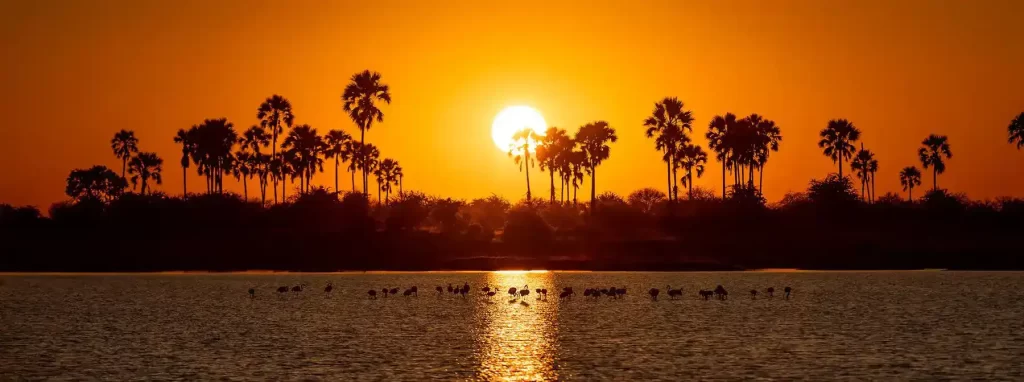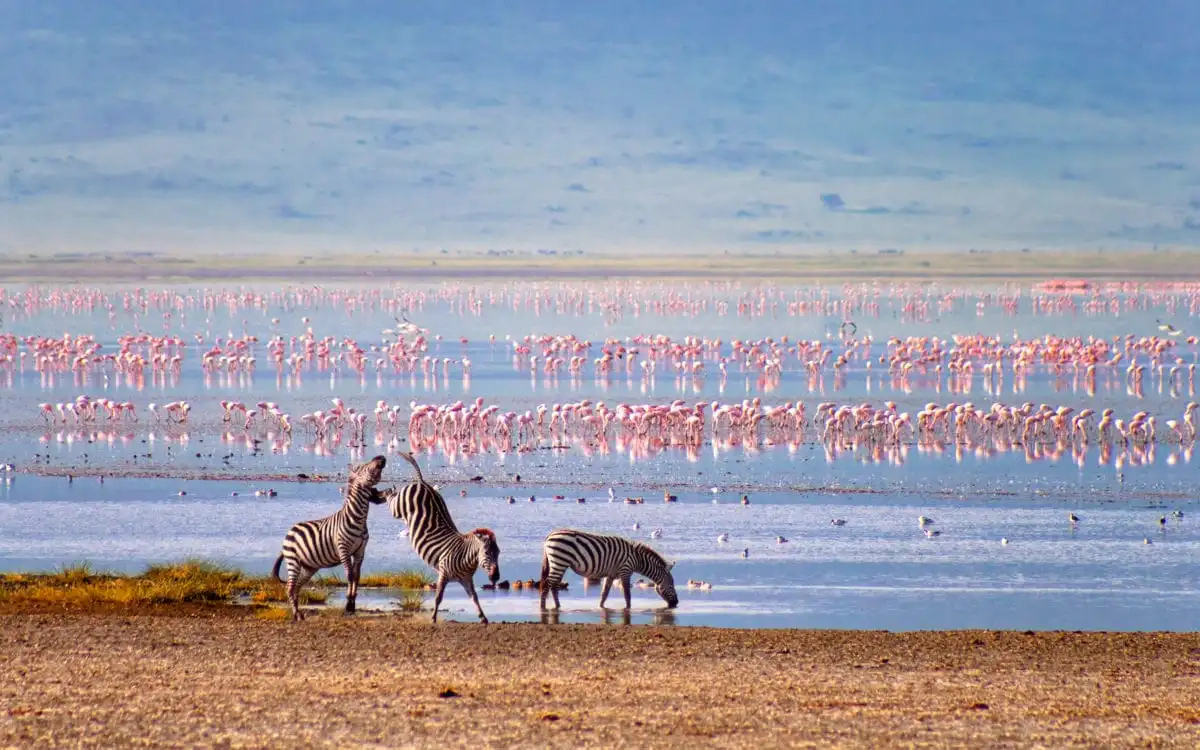Home / Destinations / Botswana / Magadikgadi Pans
The Makgadikgadi Pan is one of the most fascinating natural wonders in Botswana. It’s actually not just one pan, but a series of salt pans that were once part of an ancient lake that covered much of what is now the Kalahari Desert. The pan is all that remains of the formerly enormous Lake Makgadikgadi which once covered an area larger than Switzerland, but dried up tens of thousands of years ago.
These salt pans cover 16,057.9 km2 in the Kalahari Basin. Archaeological recovery in the Makgadikgadi Pan has revealed the presence of prehistoric man through abundant finds of stone tools; some of these tools have been dated sufficiently early to establish their origin as earlier than the era of Homo sapiens
Very little wildlife can exist here during the harsh dry season of strong hot winds and only salt water, but following a rain the pan becomes an important habitat for migrating animals including wildebeest and one of Africa’s biggest zebra populations, and the large predators that prey on them. The wet season also brings migratory birds such as ducks, geese and great white pelicans.



The pan is home of one of only two breeding populations of greater flamingoes in southern Africa, and only on the Soa pan, which is part of the Makgadikgadi pans. The other breeding population is at Etosha, in the Northern part of Namibia.
Discover our top picks for Magadikgadi accommodations, providing exclusivity, opulence, and refined sophistication.
Exploring the Makgadikgadi Pan is a unique adventure, offering visitors a chance to witness the stark beauty and incredible biodiversity of this remote corner of Botswana.
Botswana’s Makgadikgadi Pans offer more than stunning scenery. Uncover prehistoric mysteries! Archaeological finds reveal the presence of early humans through tools dating back before Homo sapiens
Contact Number: +27 63 507 9462